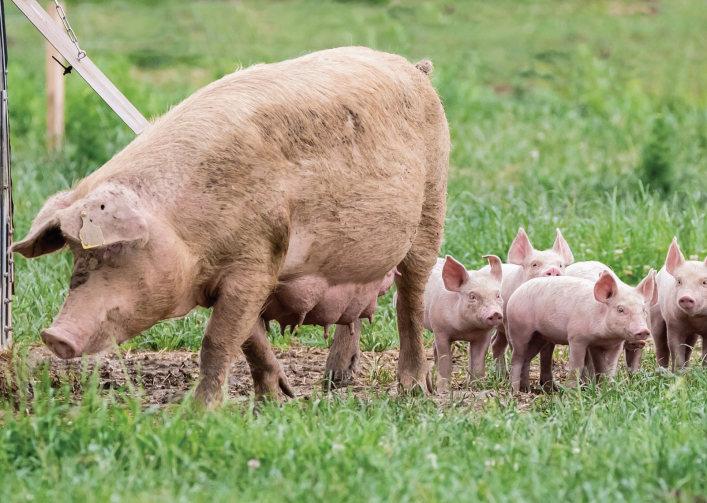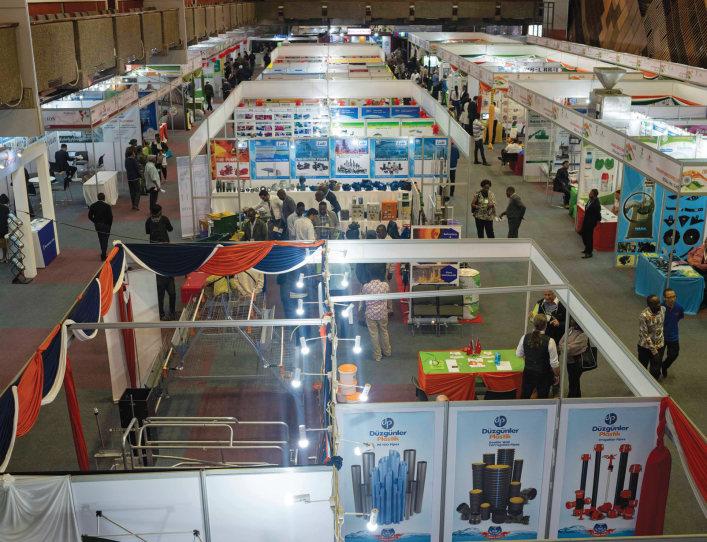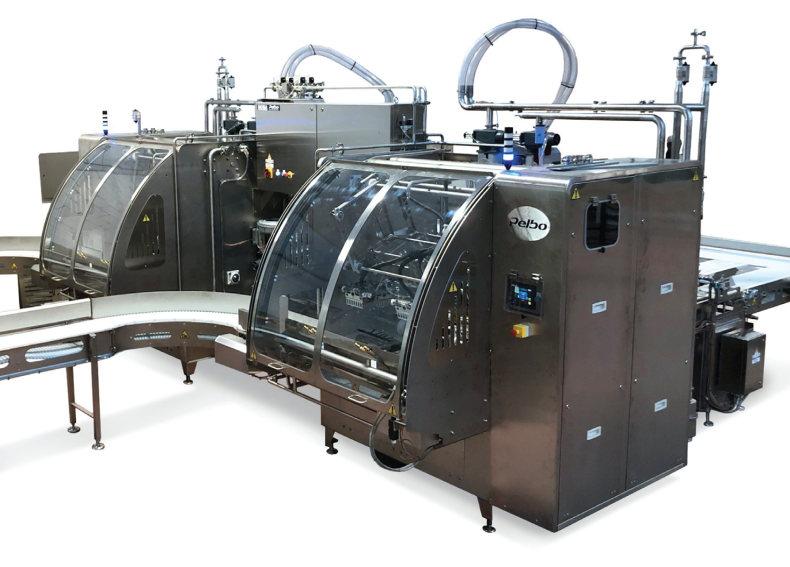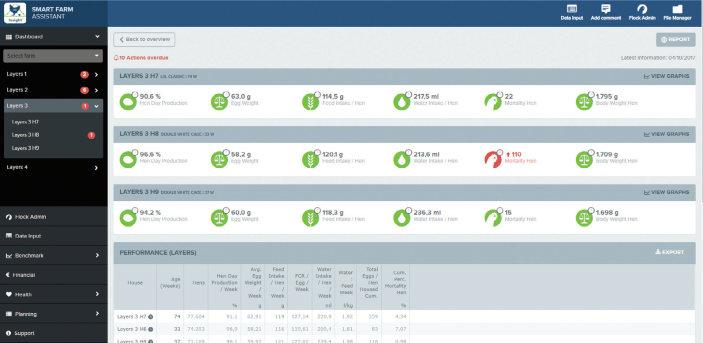
6 minute read
Livestock
Initiatives to commercialise goat production in Zimbabwe are beginning to bear fruit. Wallace Mawire reports.
Building resilient goat market systems
THE VALUE CHAIN Alliance for Livestock Upgrading and Empowermnet (VALUE) is a fouryear pork and goat meat enterprise commercialisation project. In Zimbabwe, it is managed by global justice federation, ActionAid Zimbabwe and partners including Mercy Corps, COSV, Bradford Farming, Shamiso Farms, Zvikomborero Farms and Michview Enterprises.
Major interventions
“The VALUE project is working in 12 districts of Zimbabwe namely Mbire, Rushinga, Mudzi, Chikomba, Chipinge, Buhera, Beitbridge, Gwanda, Matobo, Nkayi, Lupane and Binga where a number of initiatives are being undertaken,” said Newton Chari, VALUE project co-ordinator from ActionZimbabwe.
The interventions include the setting up of 12 Goat Improvement Centres (GICs) in the 12 districts to provide hands-on training for farmers, goat breeding services with improved breeds, such as Boer Bucks, animal health through the provision of dipping services and drug sales through established drug stores as well as improvement of animal nutrition.
Zvikomborero farms and Michview Enterprises
Chari added that the project is working closely with two private sector players –Zvikomborero Farms, based in Chivhu in Mashonaland province, and Michview Enterprises in Matobo, Matebeleland South province of Zimbabwe.
“The role of these integrators is to work closely with the small- and medium-scale farmers towards the realisation of commercial goat breeding using their expertise,” said Chari.
Zvikomborero Farms is an integrated agribusiness with farming operations located 120km south of Harare in Chikomba district.
Michview Enterprises is a Zimbabwean livestock company, specialising in the supply of goats and sheep for breeding and slaughter. Lindani Ncube from Michview said that his organisation imported exotic goat breeds from Namibia under the initiative.
“We are supplying the local smallholder livestock farmers, with exotic goat breeds which they will cross-breed with the indigenous goat breeds. These crossbreeds will adapt very well with the local environment,” he said.
He said that this will help the farmers to upscale their livestock projects.
Dr Divine Simbi-Ndhlukula from Zvikomborero Farms informed that under the initiative, they had imported some Kalahari Red and Boer goats from Namibia. They are supplying smallholder farmers under the initiative with improved genetic breeds.
“We will supply the established GICs with the cross-breed varieties and we also offer them training on livestock production,” she said.
Study undertaken
Chari revealed that under the initiative, in 2019, a scoping study was undertaken for the government of Zimbabwe.
In Zimbabwe, the goat sector’s contribution to the livestock sector is 19%, according to the National Agriculture Policy of 2018 to 2030.
The study made several recommendations, including the adoption of a farmer vertically integrated value chain focusing on formation of groups and associations, goat market system development platforms at provincial level, capacity building of goat farmers, input supply focusing on adoption of supplementary feeding systems, processing focusing on linkages between abattoirs and goat aggregation centres at district and provincial level, wholesaling, retailing and consumption, goat value chain governance, and others.
Benefits
“Farmers are accessing fodder crops for supplementing goats’ nutrition from the fodder gardens established at the centres,” Chari said.
The project is reported to have registered more than 10, 000 farmers and has helped them to form 12 district-level Goat Producers’ Business Associations to spearhead commercially-oriented activities, such as bulk input and output logistics, aggregation of goat stocks for bulk purchases, among others.
Chari added that the project completed construction of a Goat Holding Centre at Matopos Research Station, in the arid Matebeleland South province of Zimbabwe to enable abattoirs and supermarkets to buy goats in bulk. h
The VALUE project is helping farmers upscale their livestock projects.
The ILRI has embarked on a quest to find an effective vaccine for African Swine Fever. Fyna Ashwath provides more details.
THE INTERNATIONAL LIVESTOCK Research Institute (ILRI) will start testing 10 vaccine candidates for African Swine Fever, in the first quarter of 2021.
The experiment, if successful, will be revolutionary in eradicating the disease from much of Africa and the rest of the world.
ASF
African Swine Fever is a contagious haemorrhagic disease, found in wild and domestic pigs. It has a high mortality rate among pigs, with symptoms such as high fever, depression, loss of appetite, vomiting, diarrhoea, redness of the skin on the ears, abdomen and legs, and abortion of pregnant sows.
In the past, several attempts have been made to develop a vaccine or start control and prevention measures as a remedy.
The ILRI trials will be the first to test a vaccine on the genotype IX background, a genotype that circulates in Eastern and Central Africa. Scientists at ILRI have used CRISPR technology to reduce the time needed to isolate viral mutants from five years to a little over one year, accelerating vaccine development.
Technology and efficacy
The CRISPR-Cas9 technology uses precise tools rather than random recombination, to create the required strains, which will promote the growth of healthy antibodies without any virulent side effects.
Lucilla Steinaa, principal scientist at ILRI, who is leading the vaccine research against African swine fever, said: “ILRI has been researching ASF since early 2000, with a focus on epidemiology and surveillance, diagnostics and assessing the socioeconomic impacts of the disease. Over time, with national and international collaborations, the scope of research has expanded to undertake ASF vaccine development.”
“The CRISPR-Cas9 gene editing system is a quick and easy way to achieve the mutants we want as vaccine candidates, ” she added.
“Based on the successes of editing the African swine fever virus, we are looking into the use of this technology to generate live attenuated vaccines for other pathogens,” she explained.
Hussein Abkallo, a postdoctoral scientist at ILRI and technical lead of the CRISPRCas9 work in ASFV vaccine research said, “In the past, a technique known as a homologous recombination was applied to generate genetically modified ASFV vaccine candidates. It takes approximately six to nine months to get a single mutant virus using the older method, so it would take several years to develop 10 mutants. CRISPR technology reduced that time to a little over a year.”
“Besides accelerating the ASFV vaccine development effort, CRISPR technology has significant potential for making vaccines for other livestock pathogens such as, Theileria parva, a parasite that causes East Coast fever, a fatal cattle disease,” he added.
“This technology has also proven useful for improving livestock breeds and developing extremely sensitive multiplex diagnostics for both human and veterinary pathogens,” Abkallo further explained.
Genotype IX
“ILRI’s vaccine trials are an important first step in managing ASF, and the first anywhere to test a vaccine based on genotype IX, which circulates in Central and East Africa, ” commented Steinaa.
“However, there is still some way to go before a vaccine is proven efficacious and safe and approved for use in the field. Eradicating diseases requires coordinated efforts across national and international agencies. Only one animal disease – rinderpest, has ever been fully eradicated but with new scientific advances like the use of CRISPR, the process of developing an effective vaccine is accelerating meaning, we can act faster to improve animal health.” h

The African Swine Fever has a high mortality rate among domestic and wild pigs.






